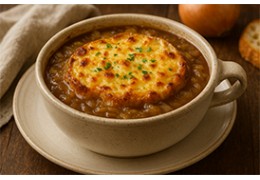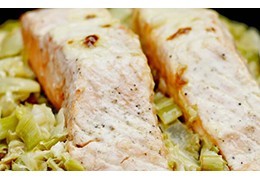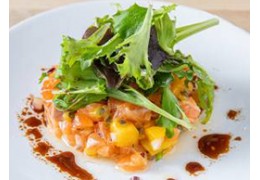What to drink with Domaine de Trevallon wines?
The red wine from Domaine de Trévallon is an atypical blend of equal parts Syrah and Cabernet Sauvignon, two grape varieties rarely associated under this latitude. The result is a wine of character, structured, deep, with fine but present tannins, whose aroma blends black fruits, spices (pepper, licorice), Provencal herbs, leather and sometimes a slightly smoky touch. The natural freshness provided by the soil's limestone and the vineyard's relatively high altitude tempers the wine's power, making it an uncommonly versatile table companion, provided its structure is respected.
.Such a red wine calls for powerful, flavorful dishes endowed with a certain aromatic density. It excels on red meats, especially grilled or roasted beef, lamb chops with herbs, or a rack of lamb en croûte. Simmered dishes such as wild boar civet, Provençal daube, seven-hour leg of lamb or lamb tajine with figs and mild spices marry beautifully with the depth of the wine, which will echo the complex aromatics of these recipes. Game birds such as palombe or roast pigeon, perhaps accompanied by a celery purée or a jus réduit au vin, will also find their place alongside it.
The Domaine de Trévallon rouge may also prove remarkable with vegetarian dishes featuring mushrooms, such as a cep risotto or creamy polenta with chanterelles. Pairings with mature cheeses are also interesting, especially with an aged Comté, Salers or mountain sheep's tomme, which will resonate with the wine's umami notes.
In terms of serving, it's advisable to decant it if it's young (less than 10 years old), to open it up aromatically. It can age for several decades and then develop tertiary notes of truffle, tobacco, and leather, which make the pairing even more refined with hunting dishes or recipes with noble mushrooms.
The white wine from Domaine de Trévallon is also singular, made from an unusual blend of marsanne and roussanne, sometimes with a touch of chardonnay depending on the vintage. These grape varieties, typical of the northern Rhône Valley, are worked here in a taut, mineral style, a far cry from the opulent whites of Provence. The chalky soil and vinification process, with no yeasting or intensive stirring, produce a straightforward white wine, both full-bodied and chiseled, where aromas of white fruit (pear, peach), flowers (acacia, lime) and citrus mingle with hints of gunflint, almond and sometimes honey as it ages. This white has an almost marine salinity, good length and remarkable ageing potential.
.Such a white wine demands fine, precise, subtly textured cooking. It pairs perfectly with noble grilled or roasted fish, such as sea bass with fennel, turbot with beurre blanc, or sea bream simply baked with herbs. Shellfish are also wonderful companions: grilled lobster, roasted langoustines, snacked scallops with Jerusalem artichoke purée, or lobster risotto. The pairing is sublime when the dish brings out both the natural sweetness and the saline tension of the wine.
.White meats, particularly veal or Bresse poultry, can also resonate with this characterful white, especially when prepared with creamy but not too heavy sauces, or with spring vegetables. Blanquette de veau, poultry supreme with morel mushrooms, or rabbit with light mustard will find a delicate echo in the mineral elegance of Trévallon blanc.
Finally, on the vegetarian side, pairings can turn to dishes like zucchini gratin with Parmesan, leek and fresh goat's cheese tart, or asparagus flan. Aged goat's cheese (crottin de Chavignol, pélardon), or even an aged gouda, also bring a nice aromatic complexity to the whole.
It's recommended to serve this white wine around 11-12°C, and to decant it if it's young to allow it to blossom fully. With age, it gains in complexity and develops honeyed, toasty notes, and a more enveloping texture, which allow it to accompany richer dishes, or even certain hard cheeses.
It is recommended to serve this white wine at around






